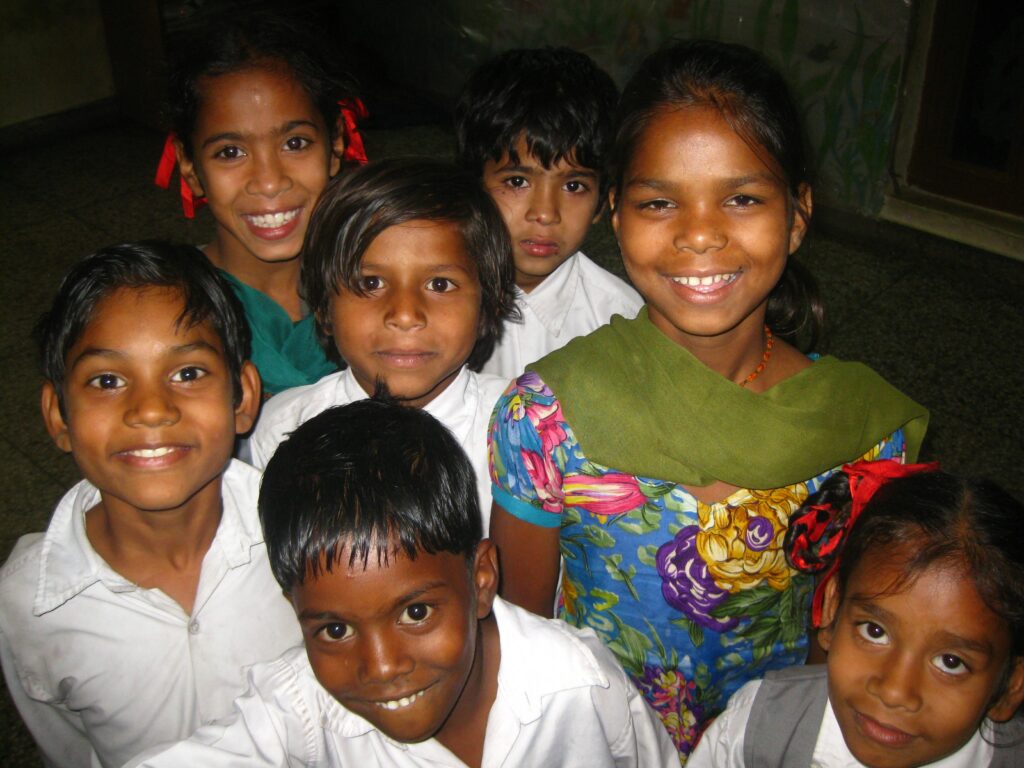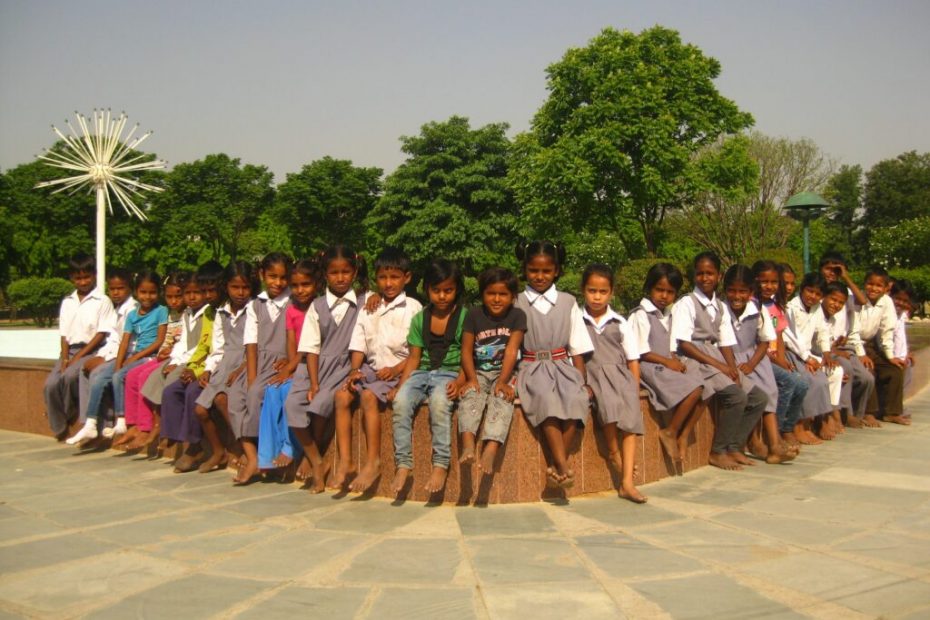A report by Olivia Page, Bright Sparks trustee.
Bright Sparks School was founded in 2001 by Gail Edwards and Nimrat Kaur. They were working in Mohali (a city in the Punjab, India) and were moved by the sight of the local slum children labouring and not receiving any schooling. What started as a small initiative to educate a handful of children has turned into a fully-fledged school with over 100 students attending, as well as a waiting list of children wanting to join the school.
Each of the students who attend Bright Sparks School come from the poorest families in Mohali, where there are pressures for the children to work to help feed their families. This barrier to education is particularly high for little girls, whose schooling is often ignored completely and are commonly destined for marriage in their early teens.
Bright Sparks Families
Bright Sparks students are typically from rural migrant families from the poorer rural states of India, such as Utter Pradesh and Bihar. The parents move their families to Mohali to seek employment. They are illiterate and are mostly unskilled flexible workers. The typical type of job for a Bright Sparks father is labouring, gardening, vegetable or fruit selling and painting. Bright Sparks mothers typically work as domestic workers, labourers, gardeners, fruit or vegetable sellers, or are housewives.
Many of the families belong to government recognised ‘scheduled castes’, the lowest castes in Hindu society, such as the Pasi, Thukur, Paswan castes. The position of the Bright Sparks parents demonstrates the entrenched lack of social mobility for the poorest, uneducated sections of society, despite government efforts via welfare schemes to lift them from poverty.
The average family income averages at R3000-R4000 per month, £30-£40 a month, or around £1 a day to support the entire family. The families of Bright Sparks students are large, on average around four to five children per family, but it is not uncommon for one family to have six, seven or even eight children. Daughters are married off young, from as young as 13 to 16 years old, which often requires the girl to return to rural life and live with her new husband’s family in the village. The laws against child marriage (Prohibition of Child Marriage Act of 2006 makes marriage illegal for girls below age 18 and boys below age 21) are openly flouted since no one informs the police of the weddings of minors and there are seldom objections from the priests officiating the ceremonies.

Working Children
Though there are laws in India against child labour it is still a widespread issue in the Punjab and more generally across the country. India is home to the largest amount of child labourers in the world as a result of the extreme poverty and lack of social security of families, like those of the Bright Sparks students.
There are many examples of Bright Sparks students who work outside of school to contribute towards their family income. Many of the older girls at Mohali Public School and in the top class at Bright Sparks work an hour a day and on Sundays as domestic workers. Many of the boys work after school or go and join their fathers and help them selling fruits and vegetables, up to as late as 11 o’clock at night on a weekday.
Jaiprakash (aged 12) in the top class at Bright Sparks goes to work with his brother (aged 14) after school, either cleaning homes or selling fruits. Whilst, Surajpal (aged 13) in the same class, works after school in a small chappati shop cleaning dishes.
For other children there is work inside the home for them afterschool. Rather then playing with friends, they wash the dishes, wash clothes, clean the floors and fill up water for the family when they go home after school. Since their parents are usually at work in the afternoon Bright Sparks students take care of the household work and also look after their younger siblings.
The Colony
The students of Bright Sparks all live in a shanty town referred to locally as a ’colony’. A dirt road takes you through the slum with small homemade houses constructed of congregated iron, bricks, wood and tarpaulin sheets either side of it. A river of sewage water and covered with plastic bags and household waste divides the area. There are water taps that children fill large water bottles from, since there is no running water in their homes, and taps that children and adults openly bathe under.
The colony is made up of illegal settlements that are vulnerable to being demolished by the government at any time. The children of Jagatpura colony are brought up in extreme poverty by parents who have never had the opportunity of education. They live in small, unquestionably unsanitary homes. On top of this, a large numbers of students are engaged in child labour in order to help their parents make ends meet.
Bright Sparks gives the children a potential way out, an opportunity to learn and progress, so they can earn a higher income when they are old enough and transform their lives. We have already seen this with some of our Bright Sparks graduates.


Education at Bright Sparks School.
There are currently 108 children studying at Bright Sparks School, based in Mohali. They make up five classes, each of which has an assigned class teacher. The classes are not organised by age grouping, as in mainstream education schools, but rather by ability and level of previous education.
The school day is structured into six lessons each lasting 45 minutes long. Class 1 (the kindergarten) has only three classes, English, Hindi and Maths. The higher classes have more subjects such as, Punjabi, Poetry, English Grammar, English Reading, and Environmental/Social Studies.
The school also runs a number of other activities for the children. On Saturday mornings the two oldest classes have yoga classes. Competitions are held each year in handwriting, poetry recital and drawing. The winners receive prizes of stationery and exercise books. Prizes are also given every two months to the most regular students in the school. Trips to the local park are organised some mornings where the children practice yoga and play together. In my discussions with the children a huge amount of children voiced that trip to the park were the favourite thing about the school!


School Resources
The school has limited facilities. The textbooks the children use are second hand and many are falling to pieces. However, new text books are very expensive and are often only available via private book shops that increase the costs more. The school owns two laptops, which the older children who are interested infrequently receive informal lessons in PowerPoint and Word from Rita the Headmistress. One of the charity’s priorities is to improve the IT facilities at the school and provide formal training to the children, either through an afterschool computer club or through IT lessons, as we know this is one way in which a disadvantaged child’s future can be brightened.
The Teaching Environment
The teachers described the teaching environment to me as very good but also challenging, since the students require much more attention than the students in mainstream schools. The Bright Spark’s students’ parents cannot help them with their studies as they themselves cannot read or count. Additionally the majority of children have the pressure of household work to complete after school, or work outside the home. As well as teaching the children academics the teachers also teach them life skills, such as manners and how to behave around elders, teachers and family, basic concepts that most take for granted but Bright Sparks students are unable to learn at home.

Bright Sparks Leavers
Bright Sparks School finishes teaching after students pass their Class 5 final exams. At this point for children to continue their education they must attend a mainstream secondary school. Bright Sparks pays the fees for students to attend Mohali Public School, an independent English medium school.
Mohali Public School is well thought of by teachers and the parents. I met with the principal, Mrs Kulwant Kaur, who told me about the school and her approach to managing it. The school has 300 students from both wealthy and poor labouring backgrounds. When I inquired about the Bright Sparks students, Mrs Kaur told me that they are all very well behaved and make good academic progress. Mrs Kaur runs her school with a similar philosophy to that of Bright Sparks. She tells her teachers to ‘teach with love’ and to understand where the students are coming from, particularly those from labouring backgrounds who have no help from their parents, when a child misbehaves.
The number of Bright Sparks students who go onto study at Mohali Public School can be seen as a measure of success of Bright Sparks School, since it demonstrates that the children have been taught well enough to re-enter the mainstream system, parents have been motivated to keep their children in education and also demonstrates the students have a good enough English language skills to attend the English medium school.
Bright Sparks Success Stories
Deepak, aged 18
Deepak passed his +2 exams in April of 2014 at the Mohali Government School. He studied for six years at Bright Sparks, four years at Mohali Public School and then a further two years at the Government School, totalling 12 years of education. He is the first Bright Sparks student to gain a full school education up to Class 12. In his +2 years he specialised in Electronics, via the Non-Medical track. He is now working and saving so he can go to college to take a diploma in Electronics, in order to become an electrical engineer.
He says: ‘The teachers used to teach us every little thing at Bright Sparks, maths and formulas. Because of Bright Sparks I could do well at Mohali Public School and became the class monitor’.
Deepak has a twin brother Puneet, who also attended Bright Sparks and is now a car mechanic’s apprentice. They have six sisters living in the village. They live in Jagatpura colony with their mother, who is also the school cleaner.
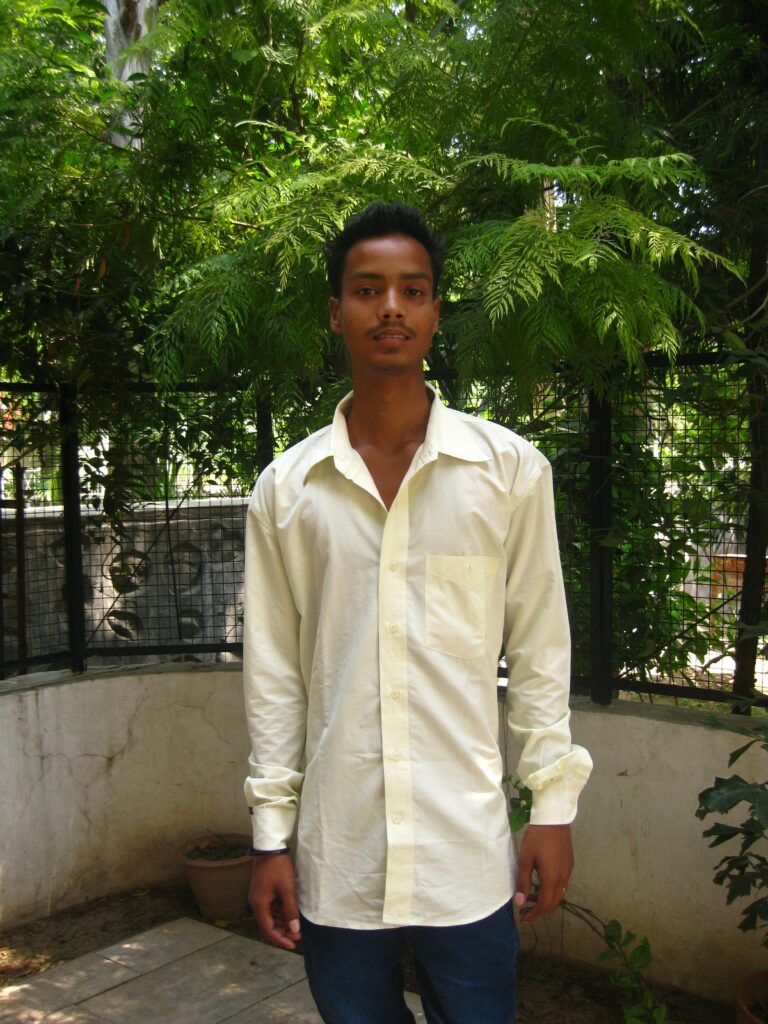
Preeti, aged 17
Preeti studied at Bright Sparks for five years and went to Mohali Public School where she stayed until Class 10, leaving in March 2012.
Preeti started her own stitching service at her home in March 2012. She stitches clothes in the day making Punjabi suits for people inside the colony and from other colonies. She is also runs an afternoon tutoring service from her home for children pre-admission between ages three and ten years, teaching English, Punjabi, Hindi and Maths.
Preeti told me, ‘Bright Sparks has made my life better, otherwise I would have to do work like my mother. I am proud of my Bright Sparks school’.
This year her parents wanted to her to get married but Preeti denied them saying she wanted to start her life and business on her own. She has many high hopes for the future and dreams of different professions she could do, but for now it is clear that she really enjoys tutoring the colony children and making a difference in their lives.
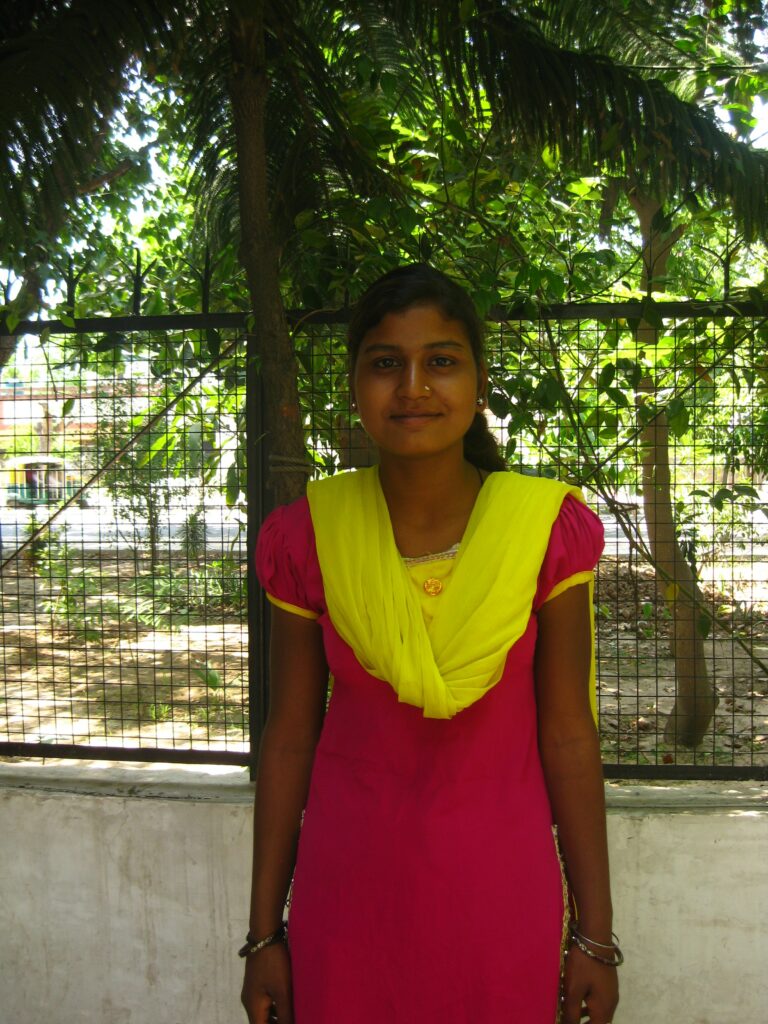
Raju, aged 27
Raju is the original Bright Sparks student. He began studying when he was 13 and studied for four years until he left at aged 18. By the time he left there were 80 students studying at the school. Since leaving Bright Sparks he has been working for Nimrat’s family newspaper business, operating printing machines and binding documents. He has been there for eight years and enjoys it greatly.
Whilst at Bright Sparks Raju had many different jobs, such as cleaning and gardening. Raju recognises the huge impact Bright Sparks has had on his life, saying when he was young he would help his mother as a domestic worker but then Nimrat and Gail brought him to school and paid his parents to let him study. Because of Bright Sparks he now works in an office, he says otherwise he would be a cleaner or labourer like his parents.
These examples demonstrate the value of the education Bright Sparks provides to the children of Jagatpura colony. Deepak is the first student of Bright Sparks to reach Class 12 and to pursue a college education. As more children go to Mohali Public School one can hope that students will be able to get to Deepak’s stage, without being hampered by external pressures and having to leave education.
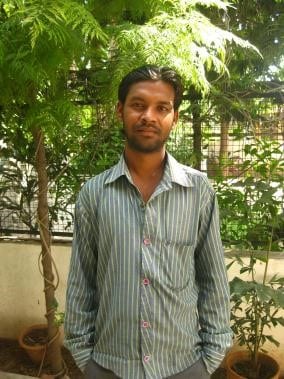
Bright Sparks’ Challenges
The Bright Sparks is an extremely small charity working in a complex area and it is natural that there is a range of challenges the school faces in providing education to the children of Jagatpura colony, especially on a very limited budget.
There are many resources that are required by the school in order to improve the learning experience of the students. There is so much potential to transform the learning of children and provide add-ons to their traditional textbook education.
Another challenge for the charity is the rising costs of sending Bright Sparks leavers to Mohali Public School. Though we are already granted a discount from the school for our students, as more of our students continue their studies and parents increase their commitment to education the increase costs need to be matched in fundraising.
What the students think about Bright Sparks School
‘I like Bright Sparks because the teachers teach politely, there are no fees and it is near to the colony’ Surajpal, 13
‘I like Bright Sparks, there is no fear at the school’ Savitri, 11
‘Bright Sparks is good, otherwise I wouldn’t be able to study anywhere else, I have education because of Bright Sparks’ Neeraj, 12
‘Teachers here teach many things, we learn to speak English and even dance’ Rocky, 11
‘The teachers teach well, no one here teases me, all students are very good’ Vineet, 10
‘I like studying here, after study I will do some better job, I want to work in an office’ Shiva, 8
‘Bright Sparks is very important to me, studying Hindi was very useful to me, learning English at Bright Sparks makes us equal to Mohali Public School students, also learned Punjabi at Bright Sparks, I was unable to learn Punjabi before Bright Sparks. I learned so much at Bright Sparks and due to this all of the Mohali Public School teachers like me.’ Suraj, 12
‘I loved Bright Sparks and studying here. My father didn’t want to send me to school but the teachers brought me here and persuaded my parents so that I can have an education’. Rajaumar, 14
‘Because of Bright Sparks I am able to count and write’ Aakash, 14
